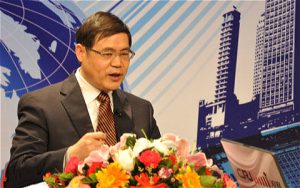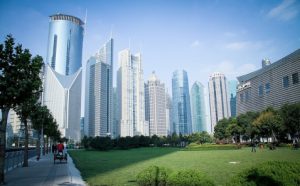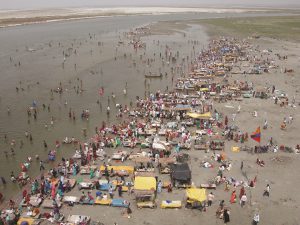A new surge of urban development may create a new wave of ‘ghost cities’ in China, as the country draws up plans to house as many as 3.4 billion people, far in excess of its current population.
Reports from both official news agency Xinhua and the independent media outlet Thepaper.cn say that urban planning in China is out of control, as each of the country’s provincial capitals is planning to build an average of 4.6 new urban districts, and regional cities look to build an average of 1.5 new districts.
These new urban areas would provide housing for 3.4 billion people – entirely out of line with actual demand from China’s population of less than 1.4 billion.
According to Xinhua, a survey of 156 local-level and 161 county-level cities across 12 provinces found the 12 provincial capitals are planning a total of 55 new districts, with one alone planning 13. Over 90 percent of local-level cities are planning new districts, the agency said.
The problem of uncontrolled development is not new: in 2013 the Peoples’ Daily criticised the trend of building new cities with the expectation that they would eventually be filled, in particular, the development of smaller cities that do not have the same potential as larger economic centres.
During normal urban development, large cities absorb smaller ones as they expand, but in many cases in China they have over-expanded, building entire new cities or districts which become under-occupied ‘ghost cities.’
The amount of land needed for expansions is also increasing. One provincial capital in the west of China is proposing 3 new districts and 5 new cities – requiring 7.8 times as much land as the original city covers. Zhengzhou, the capital of Henan in central China, covers an area of 132 square kilometres, and is planning a new district of 150 square kilometres.
According to Xinhua the trend for development of new urban areas is spreading from provincial capitals to smaller local and county-level cities, with construction on county land and in development zones also heating up. A lack of coordination means that in some cases several new cities are being planned in an area of only some dozens of square kilometres.
Zhou Yixing, a Peking University professor and a consultant to the Urban Planning Society of China, told Thepaper.cn that while most resources and personnel are concentrated in the large cities, development has not been coordinated with smaller nearby cities, and so growth hasn’t spread to those areas and spurred their own development. As growth in the large cities hasn’t been well-managed, urban problems such as congestion are getting worse.
Dai Jifeng, deputy head of the China Academy of Urban Planning & Design’s Urban Transport Institute, told chinadialogue that a survey of 288 local-level cities found 164 had built ring roads to help manage traffic flow. Some cities didn’t originally have such systems, but linked up several existing roads to form ring roads, he said, adding that demand for other forms of transport are often ignored.
In the past economic growth was seen as the most important part of urban development – so it had to be done quickly, and often at any cost, according to Shi Nan, deputy chair of the International Society of City and Regional Planners.
Speaking at the recent 2015 Annual National City Planning Conference, Shi said there is an urgent need for better urban-rural planning to resolve a number of urban development issues – and most importantly, the ideology of urban planning needs to change.
Shi said that during the 13th Five Year Plan, urban planning in China will need to change by taking the environment into account more, becoming more people-centred, and having government systems acknowledge social problems. Methods of construction as well as the intensity and scale of development could all see big adjustments in the new Plan, Shi added.
Li Tie, director of the National Development and Reform Commission’s Center for Urban Development, told reporters that urban development should take place through natural growth of functional zones, rather than artificial planning. There should also be more rational placement of industry and a focus on sustainable development, Li said.
According to Peking University’s Zhou, resolving the increasing disparity between regional and urban-rural income levels doesn’t necessarily mean expanding big cities. Developing small and medium-sized cities, particularly at the county level where there are closer links with rural areas, may be the answer. For example, the Beijing-Tianjin-Hebei Coordinated Development Plan would be improved if more efforts were spent outside Beijing and if functions were not permanently concentrated in the capital.
See also: China’s green urban planning can draw lessons from Portland and Stockholm






